Free, Online Course
To learn more, take InterNACHI's free, online How to Inspect Water Heater Tanks Course.
WATER HEATER
Observation
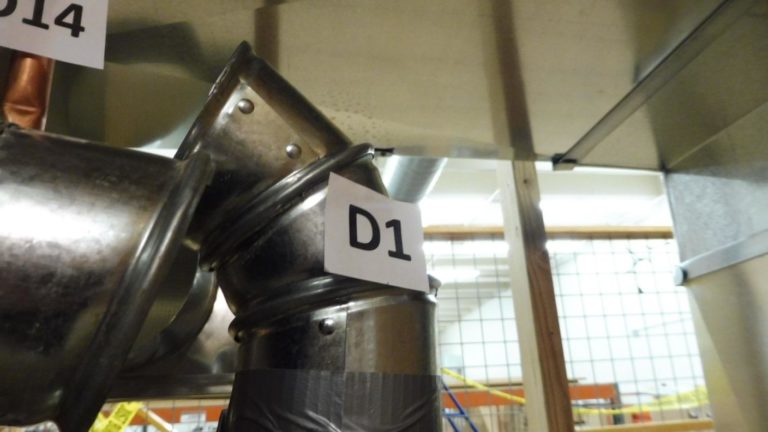
Flue vent is disconnected.
Observation
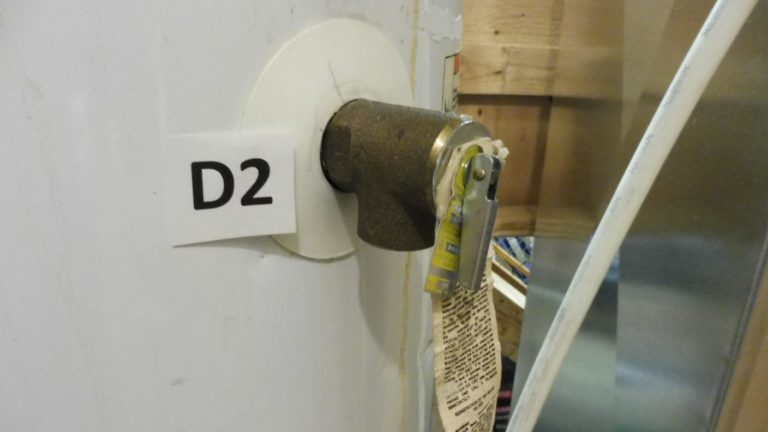
Pressure relief valve extension pipe is missing. It is recommended to install within 6” of the floor or catch pan.
Water heater tanks require:
- a separate pressure-relief valve and a separate temperature-relief valve; or
- a combination pressure-and-temperature relief valve.
Combination pressure-and-temperature relief valves must be set to:
- open at least 25 psi above the system pressure; and
- open at a maximum temperature of 210° F.
The discharge pipe must discharge to the floor, pan, waste receptor, or outdoors. It must terminate no more than 6 inches above the floor.
Observation
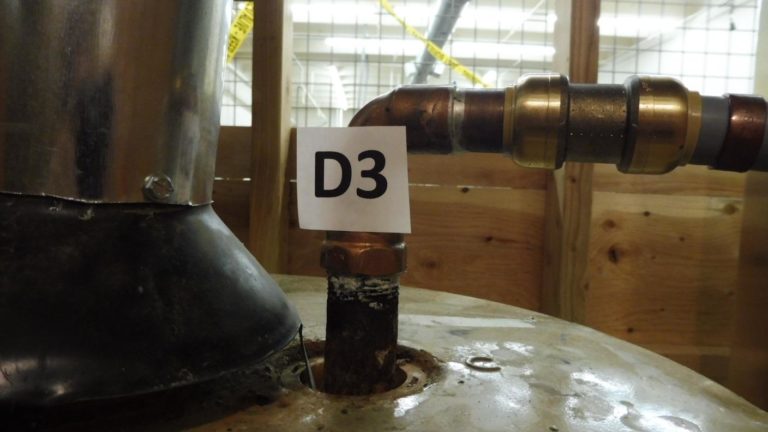
Corrosion is evident on the Cold water inlet (Dip tube side of the water heater).
Observation
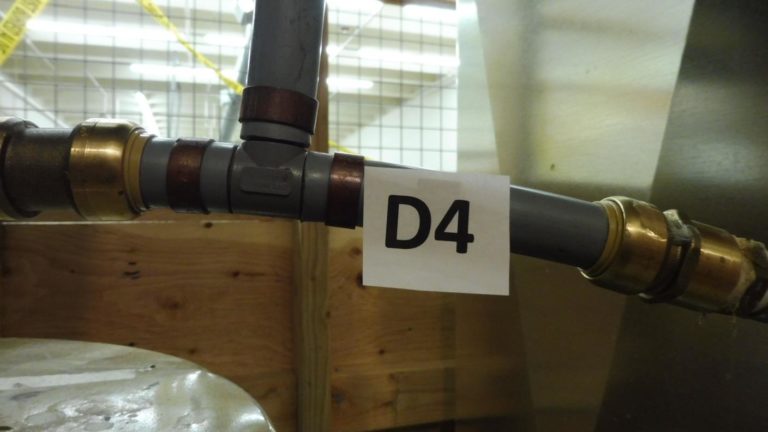
Polybutylene pipe is observed. From the mid-1970s to the mid-1990s, millions of homes were built using polybutylene pipes for plumbing instead of standard copper. Polybutylene is a plastic resin material that was used for plumbing pipes because it was cheap, flexible, freeze-resistant and easily held together with a variety of epoxies and metal and plastic plumbing fittings. Unfortunately, the polybutylene pipes started to fail in many homes due to the oxidants in public water supplies such as fluoride and chlorine. These oxidants caused the polybutylene to deteriorate from the inside out, resulting in water leaks and burst pipes. Knowing how to identify polybutylene pipes is important, particularly if you are interested in purchasing an older home.
Observation

Unsecured water line (SharkBite water lines should be secured).
Observation

Copper pipe that is used for gas should be of the type L or K which have thicker side walls.
Type L sidewall thickness, 0.045”
Type K sidewall thickness, 0.065”
Copper fitting should have thread seal agent applied to insure a tight connection. Copper fitting is soldered using soft solder. Any fuel gas lines installed using copper tube must be brazed using a filler metal containing less than 0.05% P (phosphorus) and a melting temperature greater than 1000 degrees F. The only filler metal (trade and industry standard) that contains less than the 0.05% P would be an AWS BAg type alloy (according to the American Welding Society's AWS A5.8 specification). In no case should solder or "soft-solder" be used to join copper tube and fittings in fuel gas systems.
Local authority having jurisdiction should be contacted to make sure copper pipe is acceptable for use in gas systems.
Observation
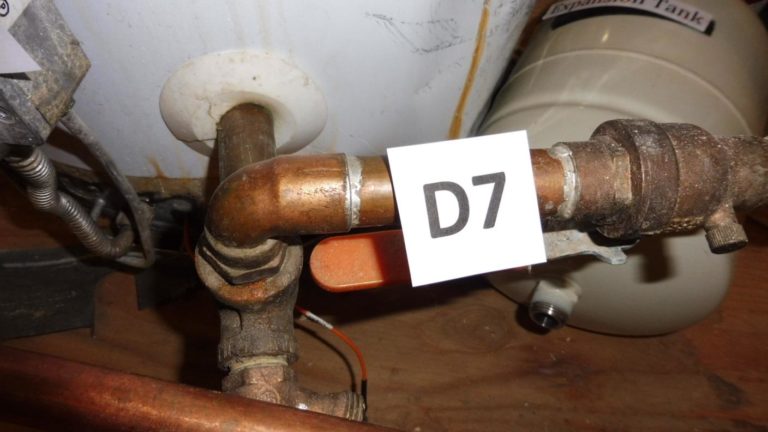
Cold water supply line is connected to the Hot Water tank drain valve.
Observation
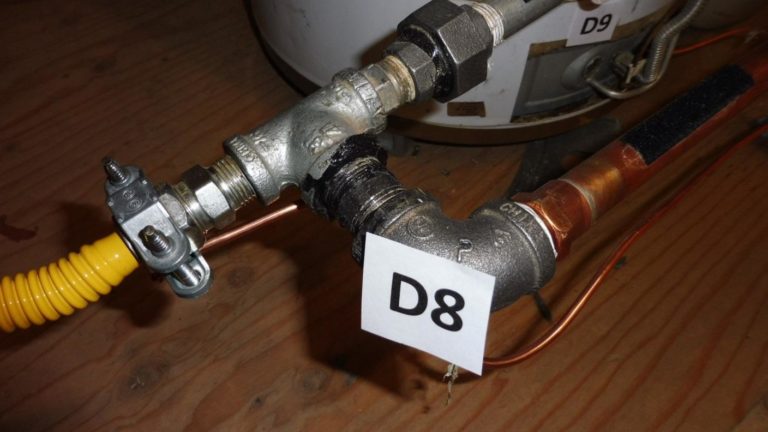
Copper pipe that is used for gas should be of the type L or K which have thicker side walls.
Type L sidewall thickness, 0.045”
Type K sidewall thickness, 0.065”
Copper fitting should have thread seal agent applied to insure a tight connection. (Teflon tape is not recommended for this use). Any fuel gas lines installed using copper tube must be brazed using a filler metal containing less than 0.05% P (phosphorus) and a melting temperature greater than 1000 degrees F. The only filler metal (trade and industry standard) that contains less than the 0.05% P would be an AWS BAg type alloy (according to the American Welding Society's AWS A5.8 specification). In no case should solder or "soft-solder" be used to join copper tube and fittings in fuel gas systems. Local authority having jurisdiction should be contacted to make sure copper pipe is acceptable for use in gas systems. Sediment trap is missing.
Observation
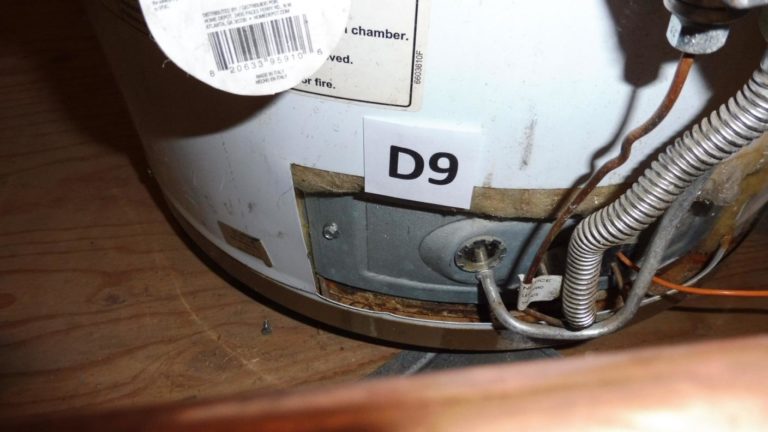
Jacket door is missing.
Observation
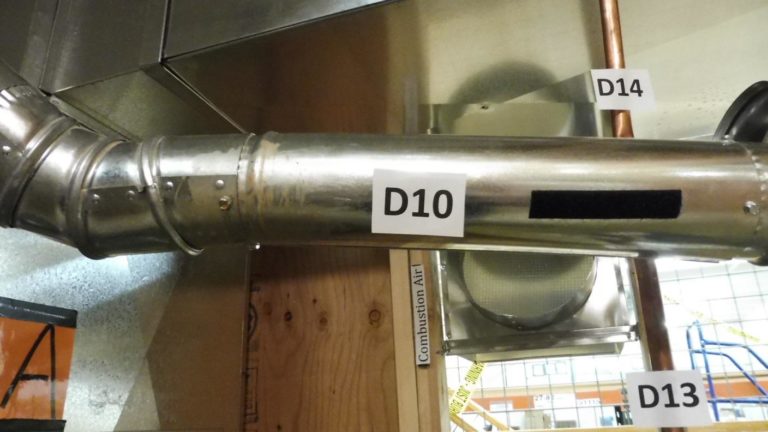
The minimum slope of ¼” per foot of flue vent is not present. This minimum slope provides enough draw to avoid back drafting.
Observation

Draft hood is not secured to the top of the Water Heater.
Observation
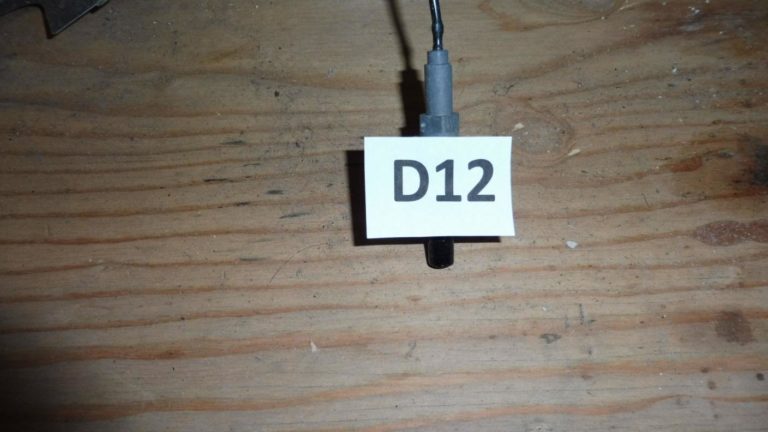
The electronic pilot ignitor is not secured inside of the Water Heater.
Observation

Galvanized water lines were observed. The mere presence of galvanized pipes doesn’t constitute an immediate action item, but it does mean that the water distribution pipes in the house should be looked at and tested more thoroughly during the home inspection, especially if there is any evidence of past leaks.
Galvanized water lines are also known to leach lead into the domestic water system.
Observation
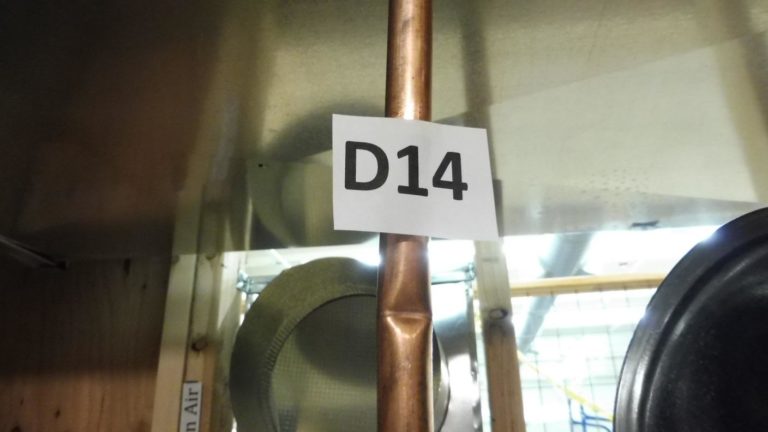
Hot water line is kinked (Damaged) just above the Water Heater.
Observation
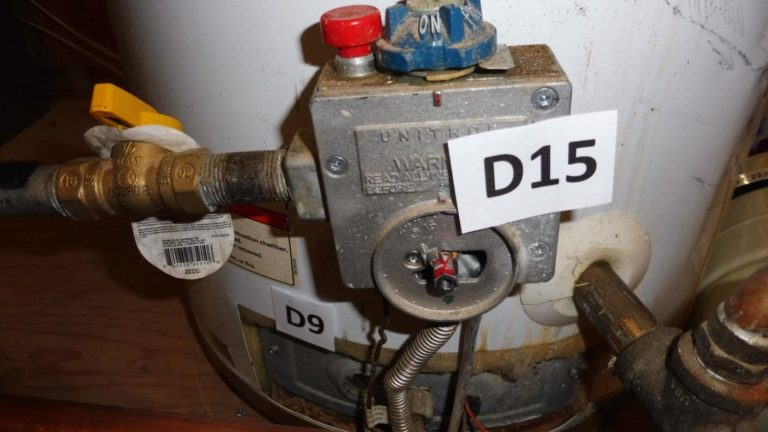
Gas valve adjustment dial is missing.
Observation
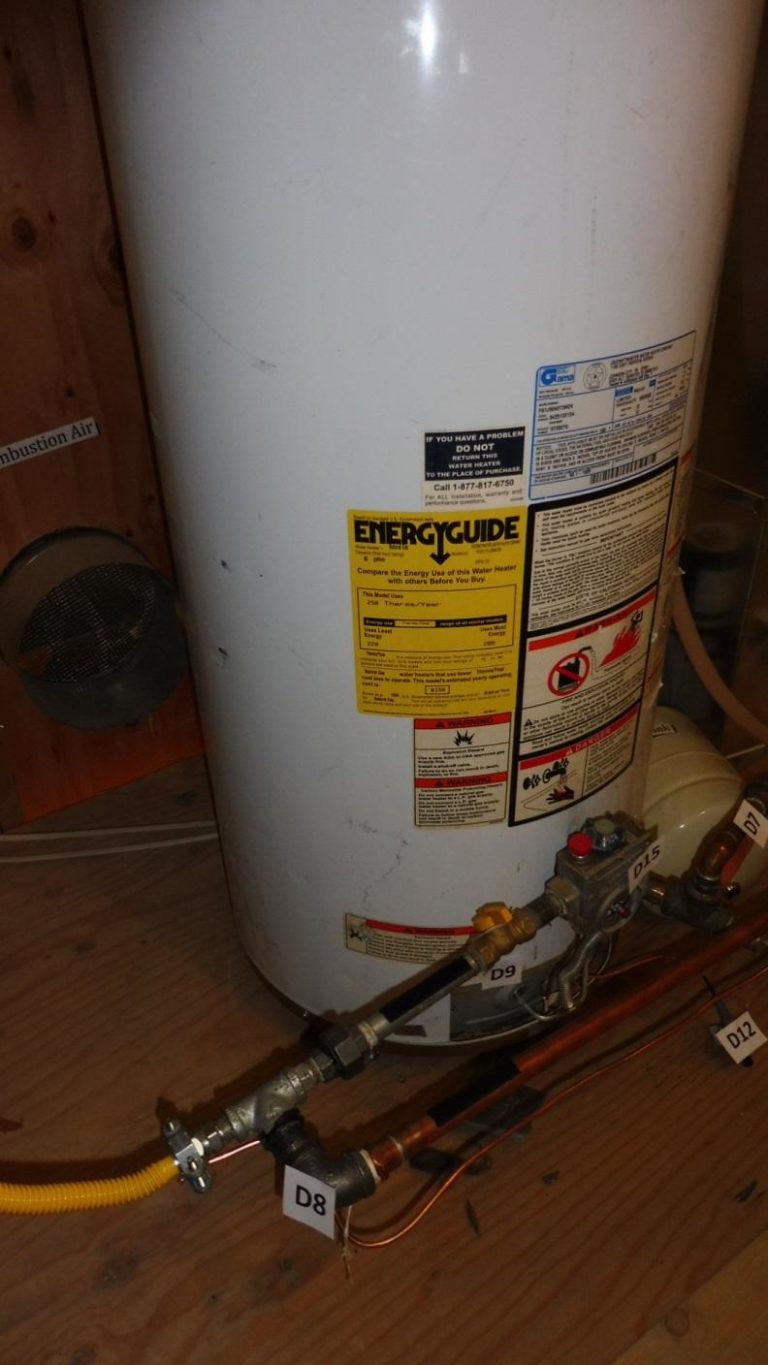
Water Heater Recommendations:
Water heaters are used in all kinds of buildings, from homes to industrial buildings. They need to be maintained and installed properly in order to avoid extensive water damage. Since they are not guaranteed against failure the International Building Codes (IBC) and Uniform Building Codes (UBC) establish safety requirements for all buildings.
Before 1991 the need for drain pans was not established clearly in any building codes. The 1991 Uniform Plumbing Code, a section under the UBC, defines the need for a drain pan in furred spaces. What does that mean? Well there was no consensus definition of what a furred space was, creating numerous problems. The 1997 Uniform Mechanical Code changed the wording so the code clarified where a drain pan is required by adding the wording ‘where leakage….will cause damage.’ In 2000 the International Residential Code clearly defines where a drain pan should be installed and how it should be drained. These three sources show that since the early nineties the need for a drain pan is established but where installation is required has evolved based on damage potential.
2000 IRC – §2801.5 Required pan, pg 393 – “Where water heaters or hot water storage tanks are installed in locations where leakage of the tanks or connections will cause damage, the tank or water heater shall be installed in a galvanized steel pan having a minimum thickness of 24 gage (0.016 inch) (0.4 mm) or other pans approved for such use.”
Damage from fugitive water can include mold/mildew, flooring damage, structural integrity problems, and electrical system failures. The potential for expensive property repairs is high, whereas a sufficient drain pan can cost as little as twenty dollars.
Drain Valve
There must be a drain valve installed at the bottom of the tank-type water heater.
Drain Pan

Where a leak from a water heater tank would cause damage, a pan is required. The pan should be galvanized steel, aluminum, or plastic. A plastic pan must not be installed under a gas-fired water heater tank. The pan must be drained by an indirect waste pipe and should terminate over an indirect waste receptor, or should extend to the exterior and terminate between 6 and 24 inches of the ground surface.
Sediment Trap
A sediment trap should be installed at the hot water tank. It should be installed downstream of the appliance shutoff valve and close to the appliance as possible. The sediment trap can e either a tee fitting with a capped nipple on the bottom of the tee, or it can be an approved sediment trap device. Sediment causes the gas flow to change direction, causing contaminants to fall out of the gas flow.
Shutoff Valves
Shutoff valves must be accessible and located in concealed areas.
TPR Valve
Water heater tanks require:
- a separate pressure-relief valve and a separate temperature-relief valve; or
- a combination pressure-and-temperature relief valve.
Combination pressure-and-temperature relief valves must be set to:
- open at least 25 psi above the system pressure; and
- open at a maximum temperature of 210° F.
The discharge pipe must discharge to the floor, pan, waste receptor, or outdoors. It must terminate no more than 6 inches above the floor.
Vent Slope
The vent connector should be installed with a slope upward toward the vent or chimney at a minimum of 1/4 inch per foot. The vent connector should not have dips or sags. The vent connector should be securely attached.
The joints between the sections of the vent connector components, including a draft hood, must be fastened together securely with sheet metal screws, listed vent material assemblies, or other approved means.
Water Heater Tank in Garage
A water heater in the garage with an ignition source that is not FVIR, flammable vapor ignition resistant, must be raised at least 18 inches above the garage floor.
OBSERVATION
The fuel-fired water heater tank in the garage is a hazard, because it is not installed properly. Because it does not have a FVIR system, it should be raised above the garage floor at least 18 inches.
Seismic Bracing
In certain areas, water heaters must be anchored or strapped. The bracing components should be installed in the upper 1/3rd and in the bottom 1/3rd of the tank. The type and size of strapping differs in relation to the size of the tank. For tanks between 40 and 100 gallons, 3/4-inch EMT conduit tubes (flattened at the ends) and 1 and 1/2 inch metal straps must be used with bolts and washers.
OBSERVATION
The water heater tank in the garage does not have any seismic strapping installed.
